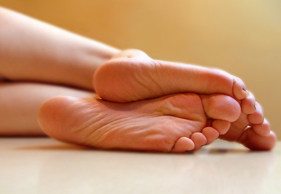Before a race or big event, most of us
like to treat ourselves to a massage or a pedicure, for all the hard training
we have done. But take heed, says podiatrist Natasha Galloway: What you do
before race day can have a huge influence on your race.
BEFORE
THE BIG DAY
Choose comfort over beauty: Leave pedicures for after race day. Often during a pedicure,
your feet are highly exfoliated and the lengths of your toenails are left
longer than what they should be. Before
race day, it should be more about comfort than beauty, says Natasha. So ditch
the pedicure for after the race and rather visit your podiatrist two weeks
before race day to keep your calluses and corns under control.
Avoid ingrown, sore or black toenails: Cut them two weeks prior to race
day. The skin is sensitive at the tips of your toes after cutting and if you
cut them too short there is time for them to grow a bit before you hit the
road. They also need to be cut straight, avoid cutting the corners and file
them lightly instead.
Choose the right sock: When it comes to socks, our preferences are different, but
one thing we all agree on is that some socks cause excessive sweating, and
sweat causes blisters. So to prevent sweating, instead of changing your socks,
try putting powder on your feet, this ensures that they are dryer for longer.
AFTER THE RUN IS DONE
Over-pronation: Many runners suffer from sore or inflamed foot arches caused by over-pronation,
which means your foot is rolling inwards too far during its normal footstrike
and toe-off. Natasha says a good way to prevent this is by checking the
biomechanics of your foot strike and then getting fitted with anti-pronation shoes
or medical orthotics. But if the damage is already done, take a plastic 500ml
bottle and fill it with water, freeze it, then roll your foot over it. This
relieves the pain, gives your foot a good stretch, and ice works as a natural
inflammatory.
Black toenails:
This is either due to shoes that are too small and put pressure on the toes, or
shoes that are too big, which creates space for a sliding effect. Your shoes
should be one size bigger than your normal shoe size to prevent problems. If
the toenail is just black, it indicates trauma. If there is a yellow
discolouring to the toenail, this indicates a fungal infection, which needs to
be treated with fungal medication prescribed by your podiatrist. A green
undertone indicates a bacterial infection for which you will be prescribed
antibiotics. To relieve pressure a small hole can be lodged (drilled) through
the toenail by your podiatrist.
Blisters: If
you have the right shoes, you shouldn’t be getting them. The secret to dealing
with them is that if they are sore, lance them; if not, leave them.
One thing is for certain: Every
woman should own a foot cream that contains a minimum of 10% urea. This
ingredient softens the foot and heals any damage that may have been done.
For more great advice about your
feet, Natasha can be contacted at 011 453 9475

